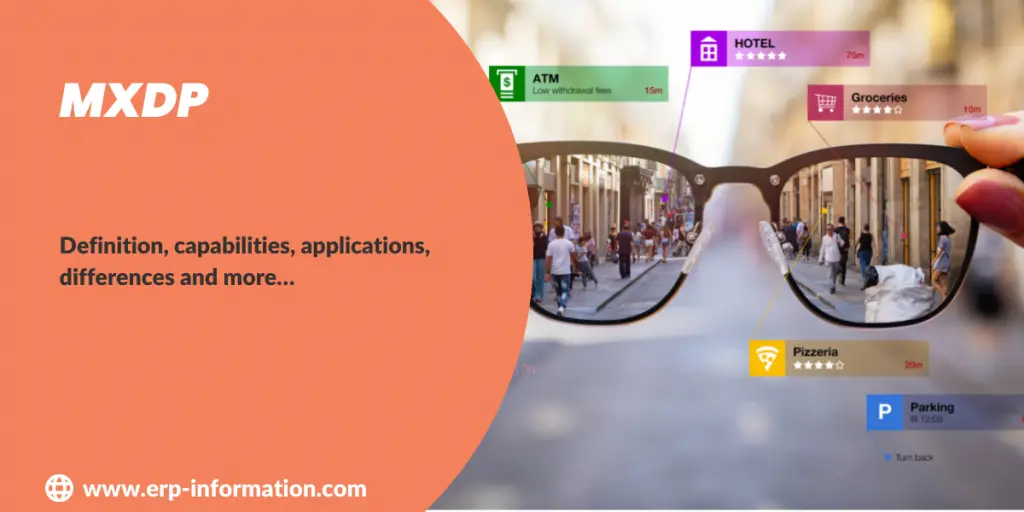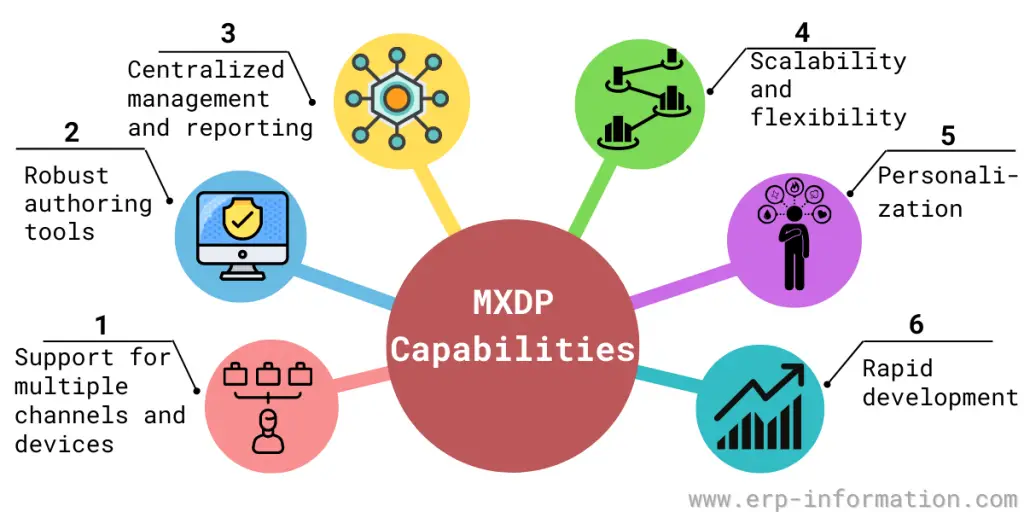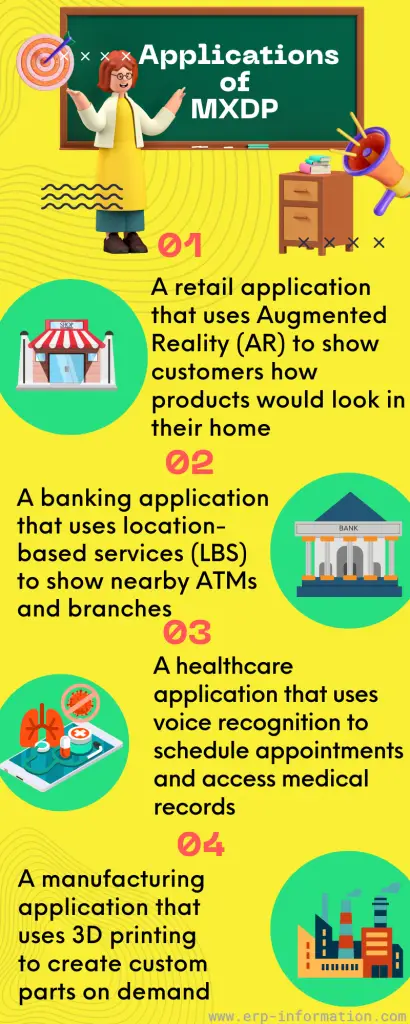Businesses are looking for ways to create a more seamless experience for their customers, but it’s hard to do this with different teams working on other parts of the customer journey.
It can be frustrating for customers when they have to jump through hoops to complete a purchase.
The multi-experience development platform is the solution; it allows you to design and develop customer experiences that work together seamlessly.
This blog post will discuss the MXDP platform, its capabilities, reasons to select it, its applications, how the Gartner multi-experience magic quadrant works, and the difference between MXDP and LCAP (Low Code Application Platform).
Multi-experience
Multi-experience is an approach to digital transformation that focuses on creating engaging experiences across multiple touchpoints.
Some common examples of multi-experience touchpoints include:
- Augmented Reality (AR): AR is a technology that allows users to interact with digital content in the real world. AR applications can be used in retail, gaming, and healthcare.
- Virtual Reality (VR): VR is a technology that allows users to immerse themselves in a digital world. VR applications can be used in gaming, education, and training.
- Location-based services (LBS): LBS is a technology that uses GPS to provide users with information about their surroundings. LBS applications can be used in retail, banking, and healthcare.
- Multi-touch interactions: Multi-touch interactions allow users to interact with digital content using multiple fingers. Multi-touch interactions can be used in gaming, education, and training.
What is MXDP?
It is a development platform that allows businesses to create multi-experience applications.
Using the multi-experience development platform, businesses can easily create engaging and personalized user experiences across multiple devices and channels.
The platform’s experience management system ensures that all experiences are consistent and coordinated.
It consists of three main components: an experience management system, tools, and a library of ready-made experiences.
Capabilities
Support for multiple channels and devices
MXDPs should be able to create experiences that can be delivered across various channels, including web, mobile, and in-store kiosks. Additionally, the platform should support multiple devices, including smartphones, tablets, and connected TVs.
Robust authoring tools
They should offer authoring tools that are easy to use and allow for the creation of rich, interactive experiences. These tools should also support the integration of multimedia content, such as videos and photos.
Centralized management and reporting
They should provide a centralized management console that allows for the easy deployment and tracking of experiences across all channels and devices.
Additionally, the platform should generate comprehensive reports detailing performance metrics such as viewer engagement and conversion rates.
Scalability and flexibility
They should be able to scale to meet the needs of businesses of all sizes. And also, the platform should be able to quickly adapt to changes in technology or customer preferences and host anywhere.
Personalization
They must be able to create personalized user experiences based on individual preferences and needs.
Rapid development
They should be able to rapidly build mobile, online, and offline applications with a Low Code platform.
Reasons to select a multi-experience digital platform
The following are a few reasons to select this platform.
Increased engagement
MXDPs provide users a seamless, unified experience, regardless of their device or channel. That leads to increased customer satisfaction and loyalty.
Improved customer retention
By using Multiexperience development platforms, businesses can create loyalty programs that offer personalized rewards to customers based on their behavior. As a result, it leads to increased customer retention and improved brand loyalty.
Increased sales
Personalized user experiences increase conversion rates and higher average order values.
Improved efficiency
It allows businesses to quickly create and deploy multi-experience applications without coding or IT resources.
Reduced costs
Businesses can use this platform to reduce their dependence on third-party vendors and IT resources, resulting in reduced development and maintenance costs.
They provide detailed insights into user behavior, which can help businesses optimize their campaigns and content.
Applications
They are often used in customer-facing retail, banking, manufacturing, and healthcare. Some examples of multi-experience applications include:
- A retail application that uses Augmented Reality (AR) to show customers how products would look in their homes.
- A banking application that uses location-based services (LBS) to show nearby ATMs and branches.
- A healthcare application that uses voice recognition to schedule appointments and access medical records. It also uses multi-touch interactions to allow patients to access their medical records easily.
- A manufacturing application that uses 3D printing to create custom parts on demand.
How does the Gartner MXDP magic quadrant work?
Gartner’s Magic Quadrant for Multiexperience Development Platforms evaluates the strengths and weaknesses of vendors in the Multiexperience development platform market.
For example, the Magic Quadrant for midsize enterprises for projectors shows how well projector manufacturers are meeting the needs of midsize businesses.
It evaluates companies on two axes.
- Ability to execute: This criterion assesses the vendor’s ability to deliver on their promises.
- Completeness of vision: This criterion assesses the vendor’s ability to articulate a clear and differentiated vision for the future of Multiexperience development.
Vendors are placed in four quadrants
Leaders, Challengers, Visionaries, and Niche Players.
The vendors in the Magic Quadrant are evaluated on the following criteria:
- Product/service
- Overall viability
- Sales execution/pricing
- Market responsiveness/record
- Marketing execution
- Customer experience
- Operations
- Portfolio
- Business model
MXDP vs LCAP
| MXDP | LCAP |
| The specific type of LCAP(Low Code Application Platform) | LCAP is a more general term |
| Designed to be used by individual content creators | Intended for enterprise use. |
| It has a more user-friendly interface | The interface is not much user-friendly |
| Integrates with other tools | It does not integrate with other tools |
| An open-source project | A closed-source project |
| Written in Java | Written in C++ |
| Has more features | Has fewer features |
FAQ
What are the five best MXDP tools?
Here are the five best multi-experience development platform tools:
1. SAP Extension Suite
2. Firebase
3. Mendix
4. OutSystems
5. Salesforce Lightning Platform
Conclusion
MXDPs are essential for businesses looking to create a more engaging and personalized user experience.
Companies can quickly create and deploy multi-experience applications without coding or IT resources using multi-experience development platforms.
Additionally, they provide detailed insights into user behavior which can help businesses optimize their campaigns and content.
Reference


